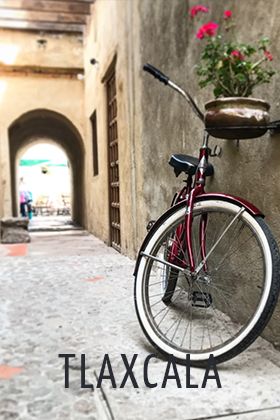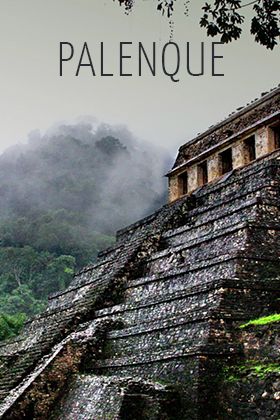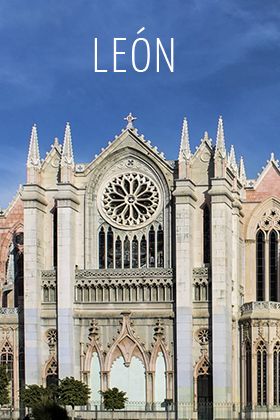About Guadalajara
by: Travel by México

About Guadalajara
by: Travel by México
On February the 14th of 1542 the installation of the first city council in the actual Guadalajara was to take place, being its majesty the Emperor Charles the Fifth of Germany and First of Spain who would grant the title of City, with its weapon shield that up to this day represents it.
By 1561 Guadalajara, with 3 thousand inhabitants, iniciates its roll as capital of the kingdom of Nueva Galicia by having Fray Pedro de Ayala place the first stone of the Cathedral which continues to stand majestically as a precious symbol of such a beautiful city.
The word Guadalajara comes from the arab term Wad-al-hidjara, “river that runs among stones”, name taken from the natal city of Nuño Beltrán de Guzmán, conqueror of this land erected as capital of the state of Jalisco on May the 27th of 1824. Land of handcrafts, tequila and mariachi: the famous tapatia land.
Guadalajara is a tourist destination that is characterized for the diversity and greatness of such large city, being also an industrial and business center with an accelerated growth that goes back to the time when the tapatío merchants would get together to socialize and in some occasions to make business in the Mercantile Circle, a club that worked around the street of San Francisco, a block away from the Plaza de Armas. It is then when business men of the aforementioned society would develop the Chamber of Commerce of Guadalajara, founded on the 20th of June of 1888.
The State Government took the iniciative of carrying out in 1953 the first Great Fair of Jalisco, the first of an interminable series of multitudinous events that annually captivate thousands of visitors or business men. On February the 20th of 1987 takes place the opening of the Centro de Exposiciones Expo-Guadalajara (Expo-Guadalajara Show Center), a space with 14 spacious entrances to the exhibition floor, functional vestibules and installations that allow the daily entrance of up to 50,000 persons, counting with great platforms which allow simultaneous loading and unloading of 65 trucks and a parking lot for 1,800 automoviles. At the present time, with more than 120 exhibitions per year, Expo-Guadalajara distinguishes itself for being the best alternative for the professional commercializing of goods and services, responding to the requirements of the international markets while guaranteeing the best quality possible. In the city and its outskirts there are 11 industrial parks, as well as a technological park sponsored by the University of Guadalajara which serves as an incubator for new businesses and place where these may get the necessary management and technological support. And how many colleges make of Guadalajara one of the most crowded professional education centers of the entire country!
Besides being known as a great metropolis where malls, restaurants, and night clubs abound, it also stands out by the charm of its history captured in monuments, museums, plazas and old buildings. The Plaza de Armas, today Plaza de la Constitución (Plaza of the Constitution),is like in any other downtown area of any city or town of Mexico, the most frequented meeting point for passersby and, at the same time, the clearest testimony of historical happenings which feed the memory of all spectators. Before her is the barroque building of the Palacio de Gobierno (Government Palace), as well as the leyendary Cathedral, a profound rooting tapatío symbol. In the central part of the plaza, at the precise center of four promenades with flowers, shining with a one of a kind beauty is the kiosk, especially made by the “Fonderiés D’Art Du Val D’Osne” of Paris at the town council’s request, bestowing on the workmanship both a characteristic and unique quality. The Cathedral, edified in its totality after 157 long and fatidic years, occupies the space of 77.80 by 72.72 metres. The towers were finished until the end of the XVII Century, but after a strong earthquake came down in 1818. After such an event, and thanks to the promotion of bishop don Diego Aranda y Carpinteiro, architect Manuel Gómez Ibarra began the design for the reconstruction of the towers, making good use of what was left intact in both of them. They were finished in 1854.
In 1992, on the 450th anniversary of the city’s foundation, the Plaza de los Laureles changed its name to Plaza Guadalajara, conserving up to this day the white flower stands and small trees, besides the circular fountain standing as a main ornament. On February the 14th of the same year, the Museum of the City would be inaugurated, also due to the 450th anniversary of Guadalajara. This place lodges the city’s history from the XVI Century up to this day, located in a building of the XVIII Century, part of the convent of the capuchin nuns established here in 1761. Standing out are also the Museo de las Artes (Museum of the Arts) or the Museo Regional de Guadalajara (Regional Museum of Guadalajara), large colonial house with a barroque façade and decorated niches, a great tourist attraction that counts with rooms especially dedicated to prehistory, archaeology, history of the state of Jalisco, ethnic history and anthropology, as well as an important and colonial art gallery. The Casa Museo José Clemente Orozco, once property of the great painter and muralist who died in 1951, was donated by his family to the Municipal Government so that masterpieces of future national fine artists could be exhibited in his honor.
And to learn and enjoy with the family, there is nothing better than the Centro de Ciencia y Tecnología, Planetario Severo Diaz Galindo (Science and Technology Center, Planetarium Severo Diaz Galindo), with a permanent exhibition of telecommunications, recreative physics, biology, aeronautics, etc...



















